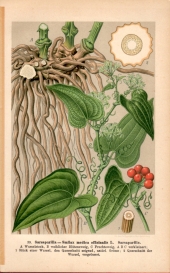Some plants are shown to accumulate toxins while others are good at not absorbing them - most of the research I see is on heavy metals it seems, but research on other toxins too. Many species of plants have been successful in absorbing contaminants such as lead, cadmium, chromium, arsenic, and various radionuclides from soils. They are being used a little for phytoremediation of soils by some people.
From a research article: " Plant roots take up metal contaminants and/or excess nutrients from growth substrates through rhizofiltration (=root) process, the adsorption, or, precipitation onto plant roots or absorption into the roots of contaminants that are in solution surrounding the root zone. This process is for metals, excess nutrients, and radionuclide contaminants in groundwater, surface water, and wastewater medium. "https://www.hindawi.com/journals/ijce/2011/939161/
For instance, I know that the herb Mullein scavenges chromium, lead, nickel and zinc from the soil. The ancient tree Ginkgo is known for cleaning the air. I have not seen the research on this, but it seems to be a common idea and I am not sure where it comes from. I know that the plant extract put into toxic mediums where they are trying to grow other plants has shown a protective ability for those plants and allows them to grow more normally in the toxic milieu. If you find research on Ginkgo cleaning toxins out of the air let me know. From the research I have seen it is all in petri dishes and I am looking for data on a live tree.
Plants are able to process some toxins into other things. They do this with mycotoxins similar to how we process mycotoxins. They have biotransformation systems also. Researchers claim the plants can take complex organic molecules that are degraded into simpler molecule contaminants in soils, sediments, sludges, and groundwater medium. So, there is apparently some biotransformation of other toxins (I know more about mycotoxins), but I am not sure how much. They can alter metals through conjugation, but I don't know if that conjugated material is excreted somehow or they simply store it. If we eat that plant, our body could unconjugate that same metal making it easier to absorb in our body. Some metals such as zinc in small quantities would be fine, but we don't want lead or mercury. The researchers state that they think amino acids like proline are probably involved in metal chelation of plants. We have proline in our saliva by the way. Ruminants have way more of it in theirs. Goats have a lot. Besides proline binding metals it also binds tannins in herbs and allows goats to eat more tannic foods. It is also thought that glutathione could be used by plants just as we use it to bind metals and other toxins (glutathione conjugation).
https://youarethehealer.org/health-conditions/optizmize-your-health/detox-biotransformation-pathways/glutathione-conjugation/ A lot of sulfur containing proteins such as cysteine can bind different metals and may be involved the same as we use many sulfur containing molecules to bind heavy metals in our bodies.
There is some very involved, tedious research out there on this topic, but I have not read much of it. Perhaps someone else has. These are just a few thoughts I have.
Oh yes, regarding the herbicides on the land. Many of them chelate or bind with minerals in the soil. Glyphosate is a great example. Monsanto said for years that it was safe and disappeared into nothingness quickly. Well, in reality it was binding with minerals in the soil, making the minerals less available and one of the ways it kills plants (making the minerals unavailable to the plant). So, now we know that it is there for an unknown amount of time. Perhaps we should send Bayer-Monsanto a bill for remediating the worlds soil.

 2
2




 3
3




 1
1




 1
1




 1
1




 1
1




 2
2


























